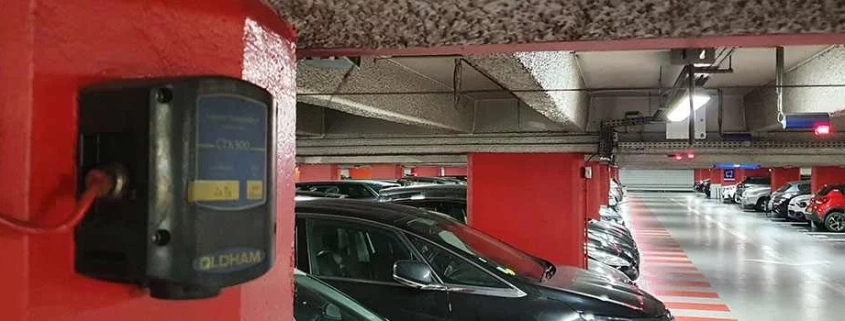Parking lot gas detection systems
Parking lots are generally poorly ventilated enclosed spaces. Steady flow of vehicles, carbon or nitrogen oxides It expels combustion gases that are particularly harmful to health, such as. These hazardous emissions are even higher in vehicles operating in cold weather. To secure these enclosed areas there is usually a car parking garage gas detection monitor Recommended for use (when not required).
Parking lot gas detection
The main harmful gases found in car parks are carbon monoxide (CO) and nitrogen oxides (NOX), such as nitric oxide (NO) and nitrogen dioxide (NO2). In electric or hydrogen vehicles LPG Other gases such as (liquefied petroleum gas) and hydrogen also exist (potential release of hydrogen during charging).
Relays will be activated if gas is present at dangerous concentration levels. Thus, the parking lot ventilation system or visual and audible alarms can be triggered for evacuation. These safety devices are all connected to the gas detection controller with preset actions.
Car park ventilation system and smoke extraction
Most parking lots risks associated with toxic gas It is equipped with air extractors to prevent Although efficient, these units fail because ventilation systems operate at fixed or random times, regardless of toxic gas concentrations. energy intensive...
By constantly monitoring concentrations, gas detection controllers for car parks security provides. Also, because they activate ventilation systems and smoke extractors only when needed. They are also cost efficient. Continuous monitoring optimizes the efficiency of ventilation systems, reducing operating costs.
Our parking gas detection control devices:
In many countries around the world, gas detection systems (in parking lots with more than 500 spaces) It is mandatory to install fixed gas detectors and control devices.


